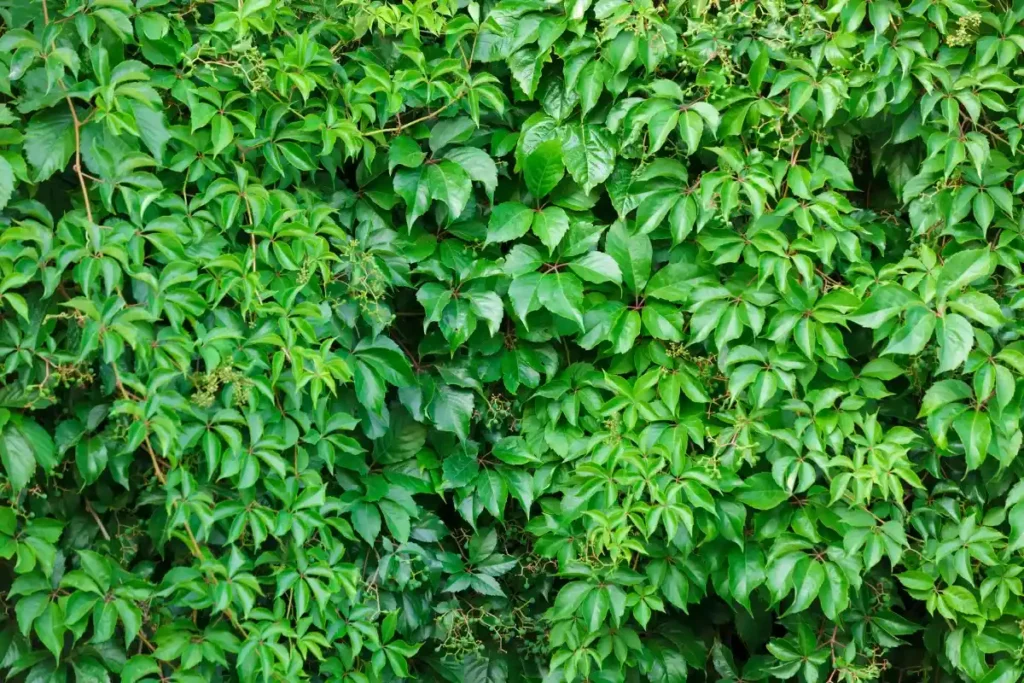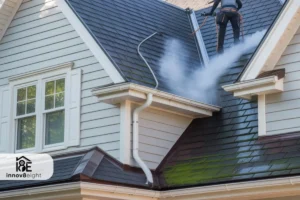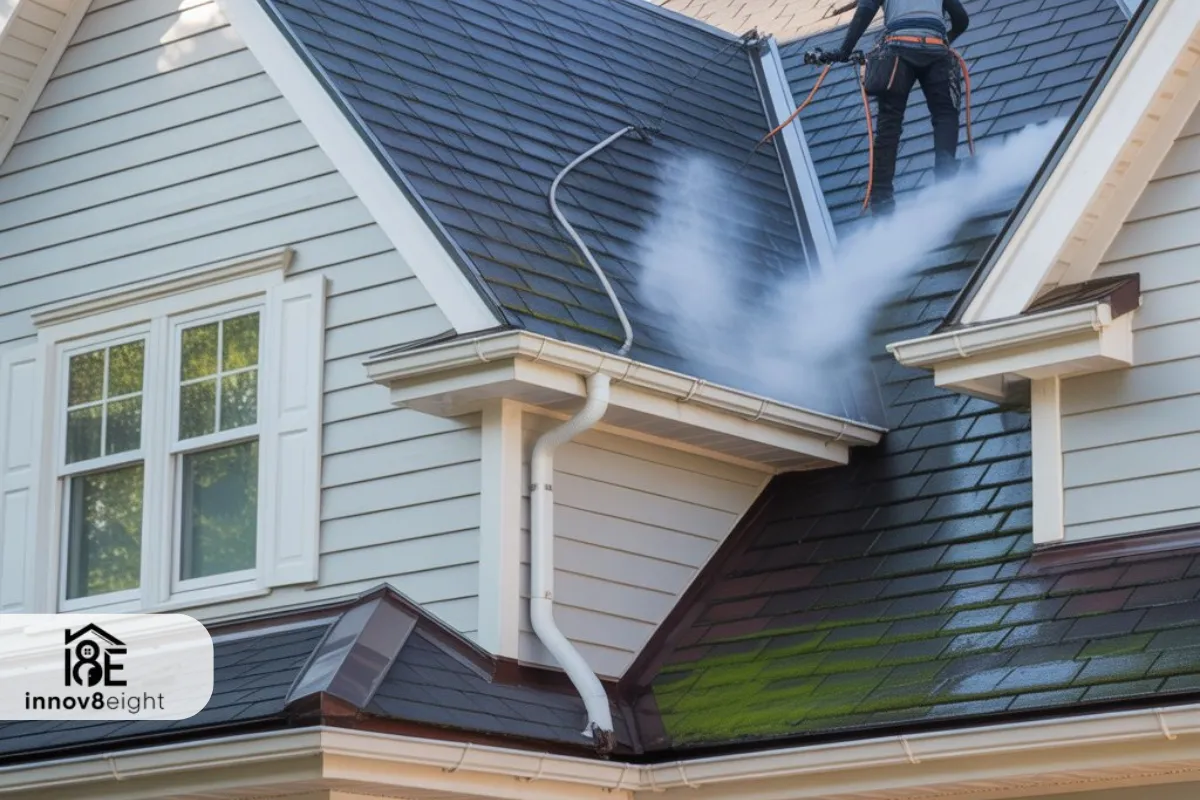Virginia creeper may look like a pretty plant, but for many homeowners, it’s a nightmare in disguise. With its ability to climb walls, spread across fences & tangle around trees, this fast-growing vine can quickly take over your yard. If you’ve ever battled it, you’ve probably searched for answers on how to kill Virginia creeper without ruining the rest of your garden.
Why Virginia Creeper Becomes a Problem
At first, it didn’t seem so bad. In the summer, its leaves are a fresh green, and in the fall, they turn a stunning red. But behind that beauty hides trouble. Virginia creeper spreads with underground roots and sticky pads that grab onto almost any surface. Even if you pull it up once, it often grows back stronger. That’s why many gardeners feel frustrated when their first attempts to kill Virginia creeper fail.
The Good News: You Can Get Rid of It
The truth is, this vine isn’t unbeatable. With the right steps, you can take back control of your yard. Whether you’re dealing with tangled vines in your flower beds or trying to figure out how to kill Virginia creeper in shrubs, there are methods that really work.
And if you’re staring at a tree or fence that’s already covered, don’t panic. Learning how to kill Virginia creeper vine is all about matching the method to the spot where it’s growing. Different places call for different approaches, and I’ll guide you through them step by step.
What This Guide Will Show You
By the time you finish reading, you’ll know:
- Exactly how to kill Virginia creeper in different areas of your yard.
- When to use simple DIY methods and when a stronger approach works best.
- How to keep the vine from coming back once it’s gone.
This isn’t just about quick fixes—it’s about lasting control. Think of this as your game plan for a cleaner, healthier yard without invasive vines.
Ready to Take Back Your Garden?
If Virginia creeper has been driving you crazy, you’re not alone. Thousands of homeowners deal with this stubborn plant every year. But with the right mix of persistence and strategy, you can finally win the battle. Let’s dive in and tackle it together.
Identifying Virginia Creeper (vs. Similar Vines)
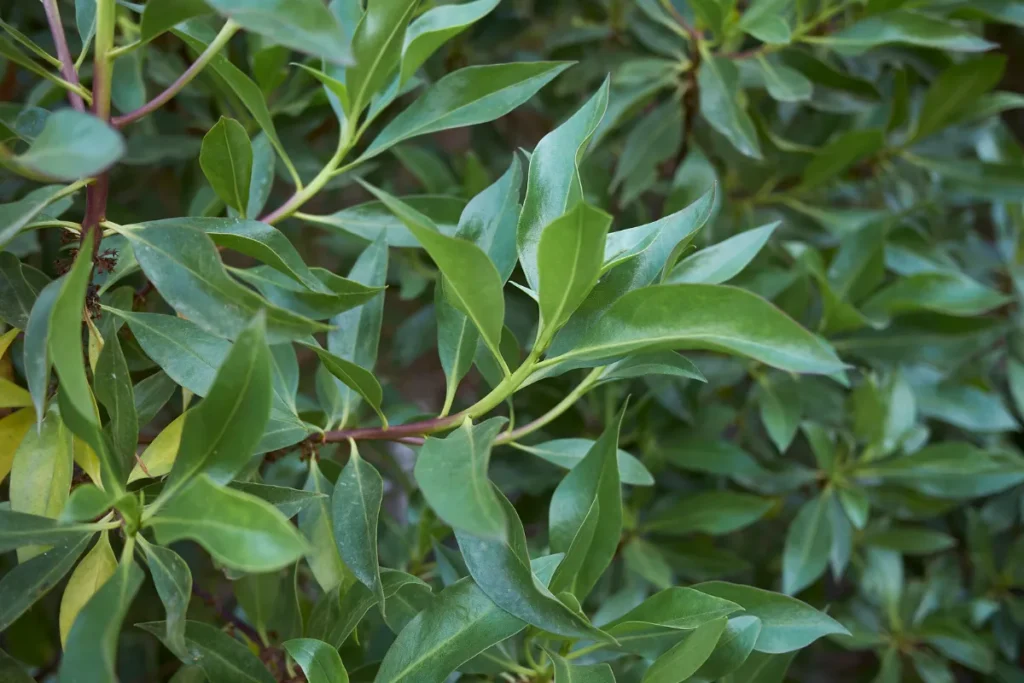
Why Identification Matters
Before you jump into learning how to kill Virginia creeper, you need to be sure that’s what you’re actually dealing with. Many people confuse it with other vines, especially poison ivy & Boston ivy. Using the wrong approach can harm your yard or worse, leave you stuck with the same problem.
Key Features of Virginia Creeper
Virginia creeper is easy to spot once you know what to look for:
- Five Leaflets: Unlike poison ivy, which has three, Virginia creeper almost always grows in groups of five. This is the easiest way to tell them apart.
- Climbing Tendrils: It uses tiny suction cups or adhesive pads to cling tightly to walls, fences, and even trees.
- Fast Growth: It spreads quickly across the ground and upwards, making it a challenge to control.
- Seasonal Color: In summer, the leaves are a deep green, but by fall, they turn a bright red or purple, which often tricks homeowners into keeping them for their beauty.
Virginia Creeper vs. Poison Ivy
One of the most common mistakes is mixing up Virginia creeper with poison ivy. Here’s the quick cheat sheet:
- Virginia creeper = five leaflets.
- Poison ivy = three leaflets (“leaves of three, let it be”).
- Poison ivy can cause itchy rashes on contact, while Virginia creeper is less harmful, though its berries can be toxic if eaten.
So, if you’re trying to kill Virginia creeper vine but accidentally treat poison ivy—or vice versa—you won’t get the results you want.
Where You’ll Usually Find It
Virginia creeper loves to spread in areas where it can grab hold and climb. You’ll often find it:
- Around fences, mailboxes, and garden trellises.
- Growing up on the side of houses, garages, or brick walls.
- Weaving through flower beds, making people wonder how to kill Virginia creeper in shrubs without hurting other plants.
- Twisting up trees, which is why many homeowners look for safe ways to kill Virginia creepers without harming the tree.
Spotting It Early Is Key
The earlier you identify this vine, the easier it is to control. Let it go too long, and you’ll be dealing with thick stems and stubborn roots that are harder to remove. Knowing what it looks like now will make the next steps, learning how to kill Virginia creeper, much more effective.
Why Is Virginia Creeper So Hard to Kill?
The Secret Strength of This Vine
If you’ve ever tried pulling Virginia creeper out by hand only to see it reappear a few weeks later, you’re not alone. Many homeowners wonder why this plant feels almost impossible to stop. Before we dive into how to kill Virginia creeper, it helps to understand what makes it such a stubborn opponent.
Deep and Spreading Root System
The biggest reason it’s tough to kill Virginia creeper is its underground root network. Even if you cut the top part, pieces of the root left behind can sprout new vines. That’s why simply trimming it back doesn’t work—it’s like giving it a fresh haircut while leaving the brain untouched.
Sticky Climbing Power
Virginia creeper is also a master climber. Its tendrils have little suction cups that glue themselves to walls, fences, and tree bark. Once it latches on, pulling it away often leaves behind marks, sticky residue, or even bits of damaged wood or brick. This makes people extra cautious when figuring out how to kill Virginia creeper vine on homes or fences.
Fast Growth and Regrowth
Another frustration? Speed. Virginia creeper can grow several feet in a single season. Even if you cut it down once, it bounces back quickly. That’s why many gardeners get discouraged when their first attempt to kill Virginia creeper doesn’t stick.
It Competes With Everything
This vine doesn’t just grow—it invades. It winds its way through shrubs, strangles young trees, & covers ground so fast that other plants struggle to survive. If you’ve been asking how to kill Virginia creeper in shrubs, you know how tricky it is to untangle it without harming your favorite plants.
Why Quick Fixes Don’t Work
The truth is, there’s no magic one-step solution. Pouring vinegar once or pulling a few vines won’t keep it away forever. To really kill Virginia creeper, you need persistence and the right method for where it’s growing. The good news? Once you understand its sneaky habits, you can finally fight back and win.
Manual Removal Methods (DIY, Non-Chemical)
When to Choose Manual Removal
If you prefer not to use chemicals or just want to start with a hands-on approach, manual removal is a smart first step. It’s especially helpful if you’re dealing with Virginia creeper in smaller areas, like flower beds & around shrubs. Learning how to kill Virginia creeper in shrubs without harming other plants often begins with simple but careful manual work.
Step 1: Pulling and Digging Out the Roots
- Put on gloves to protect your skin.
- Grab the vine close to the ground and gently pull.
- Use a small shovel or trowel to dig out as much of the root as possible.
The key here is patience. Even small pieces of root left behind can sprout again. If you’re serious about how to kill Virginia creeper, you’ll want to get as much of the underground system as possible.
Step 2: Cutting Vines at the Base
Sometimes the vine is too large to pull by hand, especially if it’s climbing a tree or fence. In this case:
- Use sharp pruners or loppers to cut the vine near the ground.
- Leave the upper part attached until it dries out—trying to yank it immediately could damage your fence, wall, or tree bark.
This is one of the safest methods if you’re asking how to kill Virginia creeper vine without hurting nearby structures.
Step 3: Smothering the Vine
If pulling and cutting aren’t enough, smothering works well for ground-level growth.
- Cover the area with thick mulch, cardboard, or black plastic.
- Block out sunlight so the plant can’t photosynthesize.
- Leave the cover in place for several weeks or months.
This starves the plant of energy & helps weaken regrowth.
Step 4: Stay Persistent
Manual removal takes effort, and you’ll probably see new sprouts pop up. Don’t get discouraged. Simply repeat the process—pulling, cutting & smothering. Over time, the vine loses strength.
If you’re determined to kill Virginia creeper, staying consistent is just as important as the method you use.
Chemical Control (Most Effective Methods)
When to Use Chemicals
Sometimes manual methods just aren’t enough. If a Virginia creeper has spread across large areas, climbed high up a wall, or keeps coming back no matter how much you pull, chemicals can save you a lot of time and energy. Many homeowners looking for how to kill Virginia creepers end up choosing this route because it gives more reliable, long-term results.
Step 1: Cut-Stump Treatment
One of the most effective ways to kill Virginia creeper vine is the cut-stump method. Here’s how it works:
- Cut the vine close to the ground using pruners or loppers.
- Immediately apply a concentrated herbicide (like glyphosate or triclopyr) directly to the freshly cut stump.
- Use a brush, sponge, or spray bottle for even coverage.
The chemical is pulled down into the root system, stopping regrowth. If you wait too long after cutting, the stump seals and the treatment won’t work as well.
Step 2: Spot-Spraying Young Vines
For smaller or younger growth, spraying can be effective:
- Mix the herbicide according to the instructions on the label.
- Spray only the leaves of the Virginia creeper, being careful not to hit nearby plants.
- Use a piece of cardboard or plastic as a shield if the vine is growing close to shrubs or flowers.
This is a good option if you want to know how to kill Virginia creeper in shrubs without harming your garden favorites.
Step 3: Timing Matters
Chemicals work best when the plant is actively growing. Late spring through early fall is the ideal window. Applying herbicide in the middle of winter won’t do much because the plant is dormant.
Step 4: Be Safe and Smart
- Always wear gloves and eye protection.
- Keep kids and pets away until the spray dries.
- Follow label directions—using more chemicals than needed doesn’t work faster, it just wastes product.
Why This Method Works
Unlike pulling or cutting, chemical treatments attack the roots directly. That’s why they’re considered the most dependable way to truly kill Virginia creeper and prevent it from bouncing back year after year.
Natural / Organic Alternatives (Realistic Expectations)
Why Go Organic?
Not everyone feels comfortable using chemical herbicides. Maybe you’ve got kids or pets running around, or you just prefer eco-friendly solutions. The good news is, there are natural ways to kill Virginia creeper, though they usually take more time and persistence. If you’re patient, these methods can still get the job done.
Vinegar Spray
One of the most popular home remedies is vinegar. Its high acidity can burn the leaves and slow down the vine’s growth.
- Fill a spray bottle with white vinegar.
- Spray directly on the leaves of the Virginia creeper.
- Repeat every few days until the plant starts to wither.
Keep in mind, vinegar can also harm nearby plants, so this isn’t the best choice if you’re figuring out how to kill Virginia creeper in shrubs without damage.
Boiling Water
This method is as simple as it sounds. Pouring boiling water over the roots can shock and weaken the plant. It’s most effective on smaller vines or new sprouts rather than established, woody growth. If you’re looking for a chemical-free first step in how to kill Virginia creeper vine, this is worth a try.
Salt or Baking Soda
Sprinkling salt or a strong baking soda mix around the roots can make the soil less friendly for regrowth. Just be cautious—too much can affect the soil quality for other plants as well.
Cutting + Persistence
Natural methods often work best when combined with manual removal. For example:
- Cut the vine near the ground.
- Pour vinegar or boiling water on the stump.
- Cover the area with mulch or cardboard to block sunlight.
This layered approach makes it harder for the vine to bounce back.
What to Expect
Unlike herbicides, these natural solutions don’t usually kill Virginia creeper in one shot. They may take several rounds of treatment. Think of them as “slow but steady.” If you’re committed to staying chemical-free, persistence is your best tool.
How to Kill Virginia Creeper in Specific Locations
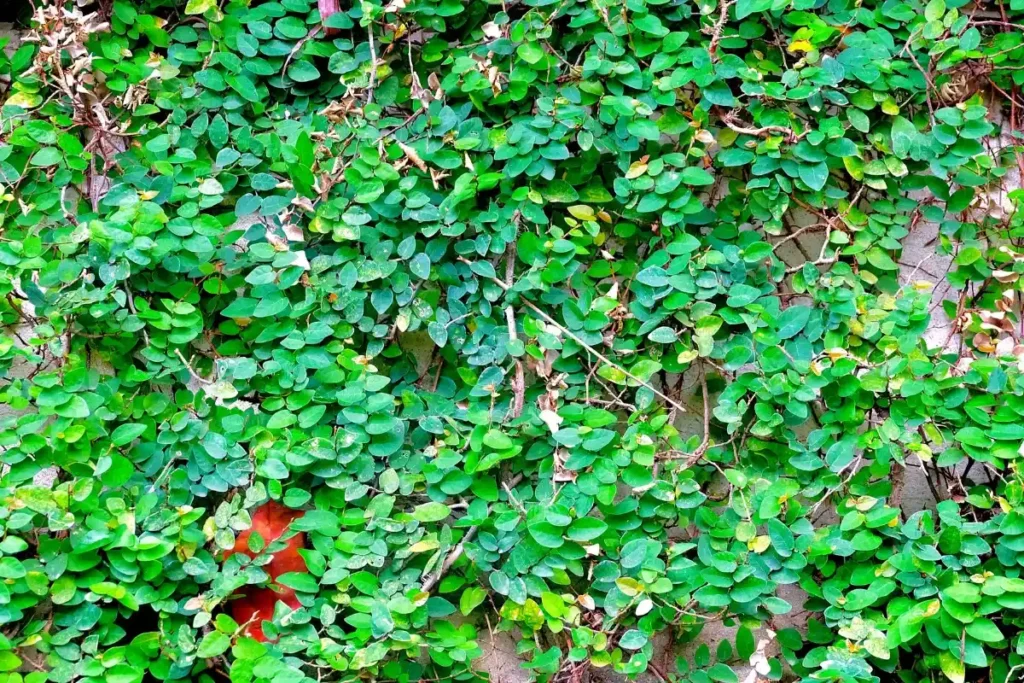
Why Location Matters
Virginia creeper doesn’t behave the same everywhere. The way you tackle it on a tree isn’t the same as removing it from a brick wall or a flower bed. Knowing the right method for the right spot makes the job easier & helps you avoid damaging your property or other plants.
On Fences and Trellises
Virginia creeper loves fences and trellises because its tendrils easily hook on and climb. To kill Virginia creeper vine in these spots:
- Cut the vine at the base near the soil.
- Leave the top part hanging—don’t pull it off right away.
- Once it dries and dies, gently peel it away from the fence or trellis.
This prevents damage to the surface & makes cleanup easier.
On Brick, Siding, or Walls
If the vine is stuck to your house, you’ll notice its little suction cups holding tight. Pulling too hard can pull paint or brick material away. Instead:
- Cut the vine at the base and allow the top to dry in place.
- After a few weeks, brush off the dried tendrils with a stiff broom or scrub brush.
- For stubborn marks, use warm soapy water.
This method is safer for your walls and still helps kill Virginia creeper from the root up.
On Trees
Seeing Virginia creeper wrapped around a tree trunk can be worrying. The good news is, you can save the tree without much trouble.
- Cut the vine at the base, a few inches above the soil.
- Avoid pulling the top section off the tree—it could harm the bark.
- Over time, the upper vines will die naturally and fall away.
This approach is especially useful if you’re wondering how to kill Virginia creeper in shrubs, young trees without causing extra damage.
In Garden Beds or Shrubs
If a Virginia creeper has wound itself into your shrubs, patience is key. Hand-pulling is the safest way. Gently tease the vines out of your shrubs, then dig around the roots. For extra control, you can smother the base with mulch after removal.
Bottom Line
Different spots need different strategies. By matching your approach to the location, you’ll kill Virginia creeper effectively without creating bigger problems.
Preventing Regrowth & Long-Term Control
Why Stopping Regrowth Matters
You’ve cut, pulled, or treated the vines, but the job isn’t done yet. Virginia creeper is sneaky—it can bounce back from even the smallest root fragment left in the soil. Many people learn how to kill Virginia creeper the hard way, only to see it reappear weeks later. The real secret to success is long-term prevention.
Regular Monitoring
The simplest step is keeping an eye out. Walk through your yard every few weeks, especially in warm months, and look for fresh sprouts. Pulling tiny new shoots right away is much easier than fighting a full-grown vine later.
Mulching and Ground Covers
Once you’ve removed Virginia creeper from an area, cover the soil with mulch, cardboard, or landscaping fabric. Blocking sunlight weakens any leftover roots. Even better, plant low-maintenance ground covers in that space. They take up room, leaving little chance for Virginia creeper to return.
Replacing With Safer Plants
A great long-term trick is replacing Virginia creeper with vines or shrubs that won’t cause headaches. Consider climbing roses, clematis, or even simple flowering shrubs. By filling the gap, you stop the creeper from reclaiming the space. If you’re searching for how to kill Virginia creeper in shrubs without leaving bare soil, replanting is your best move.
Barriers and Smart Landscaping
For areas where Virginia creeper has been especially aggressive, think about physical barriers. Lining fences with metal edging or burying root barriers can help limit underground spread. Combined with consistent trimming, this method makes it harder for the vine to sneak back.
Stay Persistent
Remember, even herbicides and tough manual methods may not work after just one round. To truly kill Virginia creeper vine and keep it gone, persistence is everything. Treat new growth quickly, and repeat methods when needed. Over time, the plant will weaken, and you’ll gain the upper hand.
Final Thought
Learning how to kill the Virginia creeper is only half the battle. Winning the long-term war comes down to staying alert and maintaining your yard. With steady effort, you can enjoy a garden free from invasive vines.
Safe Disposal Practices
Why Disposal Matters
You’ve done all the hard work to kill the Virginia creeper, but here’s the catch—if you don’t dispose of it the right way, those stubborn vines and roots can come back to haunt you. Virginia creeper is resilient, and even a small cutting can sprout again if it touches soil. That’s why disposal is just as important as removal.
Don’t Compost It
It might be tempting to toss the vines into your compost pile, but that’s a big mistake. Compost bins usually don’t get hot enough to kill the plant completely. Instead of breaking down, the vines might take root again. So, if you’re wondering how to kill Virginia creeper vine once and for all, skipping the compost bin is step number one.
Bag It Up
The safest option is to place the vines, roots, and clippings into heavy-duty garbage bags. Seal them tightly before throwing them away. This keeps the plant contained and stops any chance of it spreading back into your yard.
Dry It Out
Another option is to let the cut vines dry out completely in the sun before disposal. Lay them out on a driveway or a surface where they won’t touch soil. Once the vines are crispy and dead, they’re safe to toss.
Burning (Where Allowed)
In some rural areas, burning yard waste is permitted. If that’s allowed in your location, carefully burning Virginia creeper debris can guarantee it won’t grow back. Just make sure to follow all local fire safety rules before lighting up.
Special Care Around Shrubs and Trees
When dealing with how to kill Virginia creeper in shrubs or trees, don’t leave the cuttings at the base of your plants. Even dead-looking vines can sometimes reroot if they’re resting on moist soil. Always remove them completely from the area.
The Bottom Line
It’s not enough to just pull or cut the plant—you have to finish the job by disposing of it properly. Whether you bag it, dry it, or burn it, safe disposal ensures that once you kill Virginia creeper, it stays gone for good.
FAQs
Q1. What is the fastest way to kill a Virginia creeper?
The fastest way is to cut the vine at the base and immediately apply a strong herbicide. This ensures the roots absorb the chemical and the plant dies quickly.
Q2. Can I kill Virginia creeper without using chemicals?
Yes! Natural methods like vinegar spray, boiling water, or smothering with mulch can work. However, they take longer compared to chemical options.
Q3. How do I kill the Virginia creeper on my house wall?
Cut the vine at the bottom and let the top part dry in place. Once it dies, gently brush off the tendrils to avoid damaging paint or brick.
Q4. Will Virginia creeper kill trees or shrubs?
It usually doesn’t kill healthy trees, but it can compete for nutrients and block sunlight. That’s why knowing how to kill Virginia creeper in shrubs and trees safely is important.
Q5. Can Virginia creeper grow back after removal?
Yes, if roots are left behind, it can regrow. That’s why persistence and regular monitoring are essential to fully kill Virginia creeper vine.
Q6. Is Virginia creeper poisonous?
Virginia creeper isn’t deadly, but its berries are toxic if eaten, and the sap may cause skin irritation for some people. Always wear gloves when handling it.
Q7. Can I compost Virginia creeper vines after pulling them?
No, avoid composting. The vines can survive and regrow in compost. Instead, bag them up, dry them out, or burn them (if local rules allow).

